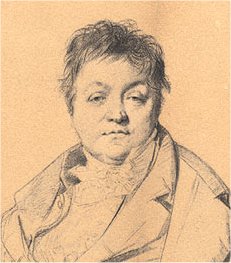Descentiousness
Isaac Newton has been principally credited with the Theory of Gravity but recent studies have unearthed a document by the great John Edwards - not related to the psychic John Edward - that have shown that this new scientific discovery was formulated much earlier. This implies that Newton may have been nothing more than a plagiarist, though a clever and very successful one.
The man who it seems got there first was the scientist John Edwards. A respectable man who preferred to wear his hair 'unwigged', Edwards had already described the theory we now know as gravity as Descentiousness, and penned his seminal work Potissimus de Rectus Cado in 1654 when Newton was still running around in short breeches. This is a full 33 years before Newton got round to writing Philosophiæ Naturalis Principia Mathematica (Gravity for Beginners) but Edwards's book got overlooked and was at length forgotten and filed away on an obscure shelf at Cambridge University.
Potissimus de Rectus Cado
The first principle
Potissimus de Rectus Cado, believed to be the Latin for Principles of Natural Falling, was published in 1654. After an excessive tasting, Edwards had been dozing in a vineyard in the northern part of Provence when he noticed the way that the grapes fell from the trees, and the way the Elephants were swooping through the air. Edwards postulated that all the physical bodies that he was observing were being drawn to the Earth as though there were some invisible force drawing them toward the centre.
As a result of his observations, Edwards wrote the first of the principles.
| “ | The world sucks | ” |
The second principle
He went on further to postulate that part of the reason for this is that large bodies had a tendency to attract each other. This was reinforced by the sight of the flying Elephants copulating in a way that repulsed him, a smaller than normal sized human.
Edwards then realised that this explained why there were so many fat people, when natural selection suggests that fat people would be weeded out of the gene pool. Fat people are usually attracted to other fat people, and pass down their fat genetics. He realised that he was onto a breakthrough in relationship to the Darwinian theory of Evolution, until he remembered that Charles Darwin wasn't likely to be writing for another two hundred years. Disheartened by his evolutionary revelation's relating to revolting reproduction reversal, Edwards sampled more of the local produce, and wrote his second rule of Descentiousness.
| “ | Fat people suck | ” |
The third principle
On further watching the grapes falling, he realised that this attraction was not just relating to the repulsive, but also seem to effect smaller bodies of mass as well. Then Edwards thought of the lovely buxom barmaid who had been serving him all afternoon. While he found her attractive overall, it was the expanse of her bust that he found the most attractive part of her.
Realising that bigger was generally better, Edwards further postulated that the larger the mass the greater the attractive force. So the grape was drawn to the earth at a faster rate than the Earth being drawn to the grape. So in this way he realised that not just larger bodies had an attractive force, but all bodies had an attractive force.
This then formed the basis for the third principle.
| “ | Every body sucks | ” |
The fourth principle
Emboldened by his thoughts, Edwards decided to return to the bar of the vineyard to see if his greater understanding of the universe and universal properties was enough to win over the previously churlish barmaid, and hopefully get her to come and join him in some from of squelchy activity.
On returning to the bar he came to the realisation that the reason behind his rejection previously is that she had already arranged an intimate tête-à-tête with another gentleman. This realisation came predominantly as he witnessed the tête aspect of that rendezvous.
This brought him to his fourth principle of Descentiousness.
| “ | Girls suck | ” |
The fifth principle
Disheartened by his continual revelations and rejections, Edwards finally succumbed to the excessive amounts of depressants in his bloodstream, and fell to the Earth. As he lay there he considered the effect that the Earth had on his body, and postulated his final, somewhat slurred, principle.
| “ | I suck | ” |
Later Career
John Edwards turned away from further scientific speculations and retired to run a riotous tavern in Norwich, Norfolk. Local historical records remain largely silent about what happened next but if Edwards' original work had been more widely disseminated, Newton's Theory of Gravity would have been dismissed as the work of a third rate copyist.


